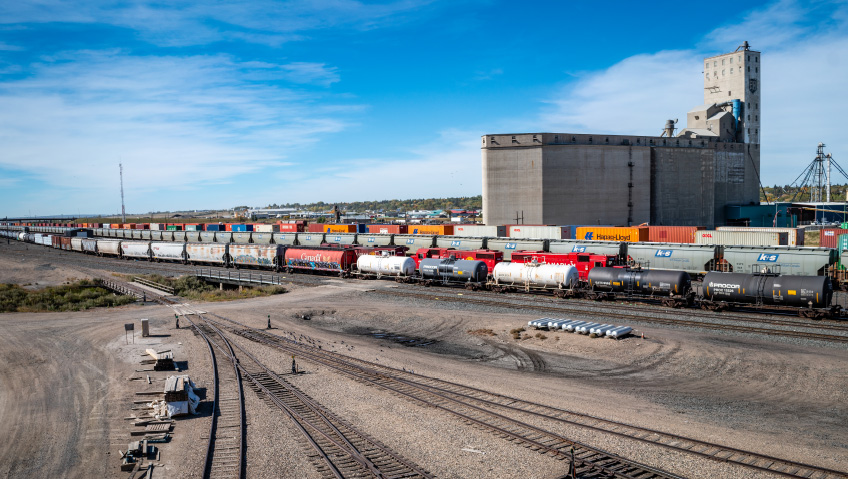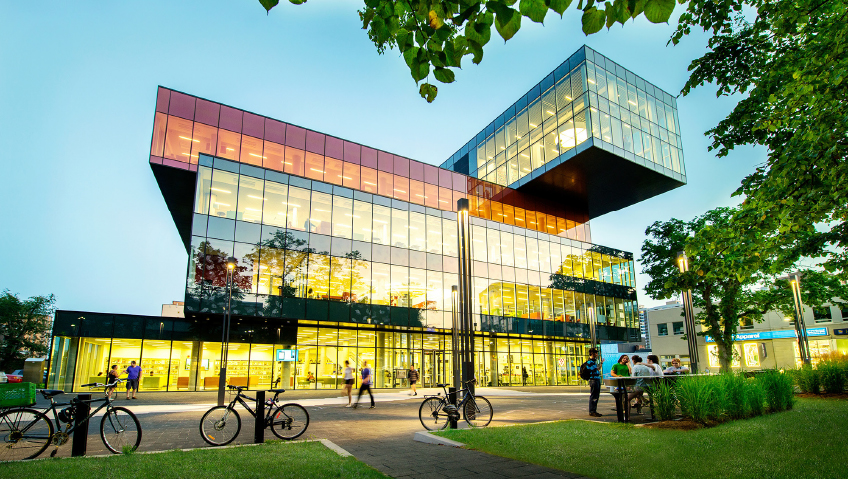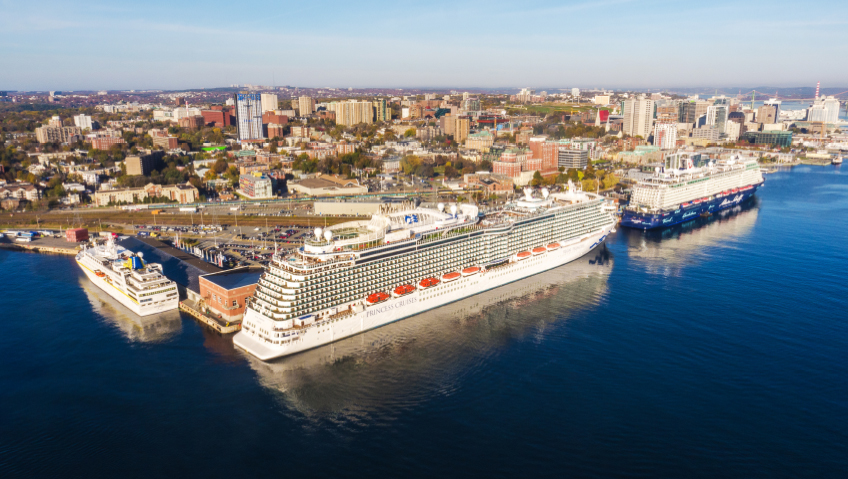Moose Jaw and its residents have never done anything half-heartedly. Residing in “Canada’s most notorious city,” Moose Javians are enormously proud of their Saskatchewan city and its reputation.
More than a century ago, Moose Jaw’s labyrinth of subterranean tunnels sheltered Chinese immigrants, and a little later, during Prohibition, reportedly (Capone’s niece claims it’s true) sheltered the world’s most notorious gangster, Al Capone, and his liquor distribution network. Today, its notoriety is as a notoriously fun place to visit—with notoriously friendly locals—and as a notoriously great place to “Get A Life” (more on that below).
Compared to other cities in Saskatchewan, such as 230,000-strong Regina, Moose Jaw’s population is modest at 34,999, yet the city boasts amenities and opportunities rivalling, and sometimes exceeding, much larger urban areas.
In Moose Jaw, benchmark house prices are $249,300, far less than $327,000 in Regina and $383,300 in Saskatoon. “Not only are we competitive across the country, we’re competitive across the province,” says Moose Jaw’s Mayor Clive Tolley. At present, the city’s building-permit value to the end of June is $73 million; last year it was about $66 million, another reflection of the growing investment flowing into Canada’s Most Notorious City.
Growth and recognition
From pork processing to power stations, Moose Jaw is a city on the rise. Aside from its unique character, Moose Jaw is one of the few cities in Canada where it is indeed possible to both get a well-paying job, and, unlike in Toronto, Vancouver and other cities, actually afford a home to call your own. In short, you don’t need to earn a six-figure or greater income to have a comfortable quality of life.
Much of the reason for Moose Jaw’s ongoing success comes down to the strategic, dynamic and growth-based approach to governance under the leadership of former Mayor Fraser Tolmie—who became member of parliament for the riding of Moose Jaw-Lake Centre-Lanigan in the 2021 federal election—and his successor Clive Tolley, who took over as Mayor last November, along with the respective members of City Council.
Building its reputation both in Canada and internationally, Moose Jaw’s infrastructure and business investments are unabashedly bold, and the accolades keep pouring in. In 2020 Moose Jaw earned first and fifth place on the Best Western Canadians Investment Towns list, along with number three of ten of Canada’s Coolest Downtowns, number two in the Top 20 Small Cities in Canada, number four of the Top Ten cities in the Prairies, and ninth place in Canada’s 25 Best Places for Business.
Large investments
While many cities promise incentives to attract new businesses, Moose Jaw’s ongoing investment speaks volumes about the confidence existing companies continue to have in the city.
In mid-2021, century-old major retailer Canadian Tire marked the opening of its new Moose Jaw premises with a celebratory ribbon-cutting. Twice as big as the old location, the massive new store is a powerful sign of the faith the respected, century-old business has in the city and its supportive community.
“This will keep people in Moose Jaw, and support our local trading area,” says Jim Dixon, the city’s Manager of Economic Development. “And at over twice the size, they are employing more people, so it’s a really positive story.” With its 11.96 acres of land in a prime commercial area on Thatcher Drive, the Canadian Tire store is close to other key retailers, such as Rona and Walmart.
According to city officials, the confidence many businesses have in Moose Jaw is formidable, including Thunder Creek Pork. Owned by Donald’s Fine Foods, the major pork processor—which exports to world markets—is undertaking a multi-million dollar retrofit of a shuttered beef packing plant into a sow processing facility. The site, and surrounding land, is strategically located on a rail spur.
In coming years, it’s estimated that the company will make further significant investments into the facility. “This is a big deal to them, and for Moose Jaw,” says Dixon.
Dixon adds that a job fair, expected in the coming months, will attract dozens of future employees to the area.
Another company embracing Moose Jaw is Brandt Industries. Employing over 3,400 worldwide, the Regina-based business is opening a new utility-trailer manufacturing facility in Moose Jaw. With production set to start later this year, Brandt will initially hire 70 people, and eventually create about 200 well-paying new positions for assemblers, welders, engineers and other skilled trades.
“Brandt is excited to become an active member of the Moose Jaw business community and we’ll be hiring local contractors to prepare the facility for production,” says Murray Yeager, Brandt Vice President, Manufacturing. “Later, when the upgrades are complete, we’ll employ local vendors for everything from supplies and janitorial services to maintenance and snow removal.”
Water, water everywhere
For businesses of all types, from coffee shops to major manufacturers, water is vital for successful operations. Recently, Mayor Clive Tolley was on hand for the ground-breaking ceremony at the Buffalo Pound Water Treatment Plant, which provides clean water to Regina and Moose Jaw and other parts of southern Saskatchewan. “At least 25 percent of Saskatchewan residents rely on the Buffalo Pound Water Treatment Plant and the water it treats and delivers to customers,” he says.
Leading global design and engineering company Stantec has been awarded engineering for the project named the Buffalo Pound Water Treatment Plant Renewal Project, as part of the Graham-Aecon Joint Venture. At $273 million, the project, slated for completion in 2025, will see upgraded water treatment for 260,000 Moose Jaw and Regina customers, as well as SaskWater, Buffalo Pound Provincial Park, and rural users.
“It’s essential for our future economic development, and this is going to secure the water supply for our area,” says Mayor Tolley of the new plant which, once operational, will be completely automated.
“This plant is going to be an economic driver, and industry will know they can locate here and have quality water. The City of Moose Jaw has received awards for our water, even though Buffalo Pound is a shallow lake. The water quality here is top-notch.”
Ensuring a sustainable source of water, the plant will benefit many industries, and especially agriculture, which will use its water for processing.
Agri-Food Industrial Park
For decades, agriculture has been the backbone of Saskatchewan’s growing economy. Located near the Trans-Canada Highway and a national railway, the Moose Jaw Agri-Food Industrial Park is ideally placed to export products both east and west, and south to the United States and Mexico.
It will also be the home to a brand-new power station, the 360 megawatt (MW) Great Plains Power Station. The power station will provide enough reliable power to meet the needs of almost 360,000 Saskatchewan homes, and “support renewable power generation and coal retirements,” according to information from SaskPower. Starting construction in March 2021, the power station is scheduled to be in service in 2024.
Costing $800 million, the power plant project will benefit the Agri-Food Industrial Park, and many agricultural businesses. With an additional 3,800 acres, the location is ideal for future growth.
“The Great Plains Power Station is creating power that’s an alternative to coal,” says Mayor Tolley. “We have water, sewage, railway, trucking, electricity, natural gas, and we have lots of land, so we’re ideally suited now for the development of agri-food industries. And the land is competitively priced.”
Aiming to attract businesses both from Canada and other countries, Moose Jaw is identifying specific industries, including pea processing, clean energy and, eventually, geothermal and greenhouse development to produce food and vegetables year-round. “The geothermal resource makes it affordable for those companies—like greenhouses—to be able to produce. It’s reliable 24/7.”
Some like it geothermal
Like many other cities back in the day, Moose Jaw had its own power company. Initially burning coal to produce electricity, the city started prospecting for oil as another source of fuel. During drilling, salt water at a temperature of about 42°C was discovered. In 1932, the Natatorium, a mineral spa and swimming pool, was built, created to take advantage of the water’s therapeutic qualities.
In the late 1980s and early ‘90s a new well was drilled, and the Temple Gardens Hotel & Spa was created. Additional research discovered a resource of even hotter water nearby, which could be used as a utility to create energy for industrial and residential use.
“We have the potential to develop industry that uses deeper geothermal well water—that comes out at a much higher temperature—that could have a variety of uses, including creation of a heat exchange system for greenhouses. It could be combined with wind, solar and natural gas to meet national targets and also spread the economy by using geothermal water,” says Mayor Tolley.
The city plans to drill two wells, one of them on an angle—a return well—so that cooled water can be channelled back into the igneous rocks, naturally re-heated, and then emerge back at the surface, creating a zero-carbon supply of energy.
Past meets future
From new business breaking ground to Saskatchewan Polytechnic starting its new Agriculture and Food Production Program within the agri-food industrial park, Moose Jaw is home to plenty of long-term endeavours and lots of exciting new ones. Since the 1930s, the area has been used for flight training, and is home to 15 Wing Moose Jaw, the centre of the Royal Canadian Air Force’s (RCAF) aircrew training. NATO Flight Training in Canada will continue for years to come; the contract was recently extended for another 25 years. Owing to its flat terrain and sparse population, the dedicated air space southwest of Moose Jaw is perfectly suited for flight training.
“It is part of our culture here, and will continue to be because of the airspace available,” says Dixon, who added that there will be increased air traffic in Moose Jaw thanks to a recent runway expansion project at the Moose Jaw Municipal Airport. The MJMA runway was recently expanded to 4000 feet, thanks to a project funded by the Government of Canada, the Government of Saskatchewan and the City of Moose Jaw. The airport also features 12 hangars utilized by local aviation enthusiasts and businesses.
Get a Life
The City continues to adhere to the values of its brand as Canada’s Most Notorious City. The Economic Development team recently unveiled its “Get a Life” campaign, telling non-residents that they can get an unequaled quality of life in Moose Jaw. A notoriously fun promotional item they created was “Get A Life” cereal. They created mock packaging including a nutritional-facts label that reads “Notoriously Nutritious.” Under such “ingredients” as Time, Space, Friendliness and History, they say Moose Jaw provides 100 percent of the “requirements for a healthy, active, fulfilling life in Canada’s Most Notorious City—Moose Jaw, SK!”
When asked about Moose Jaw’s quality of life, Mayor Tolley recalls a conversation with a gentleman from India. Moving to Canada, he lived and worked in busy downtown Toronto for 30 years, at which point he sold his condo, and moved to Moose Jaw.
“When I asked why, he said ‘clean air,’” says Mayor Tolley. “He’d done extensive research. He had allergies and problems with his lungs and breathing and was absolutely convinced moving to Moose Jaw had extended his life and made it more comfortable. The only place you can find cleaner air than Moose Jaw is the South Pole.”
To this day, Mayor Tolley sees that gentleman from India who’s now a Moose Javian, out and about and walking everywhere, since he doesn’t need a car to get around. “Moose Jaw is a place where we can walk to the things we want to do, and that’s a tremendous asset for us.”






